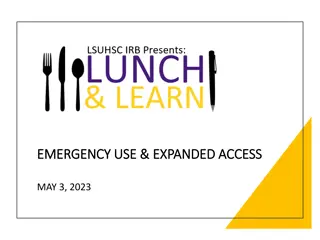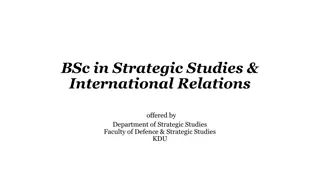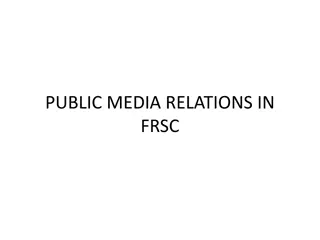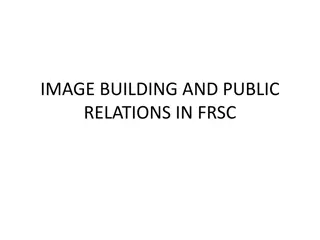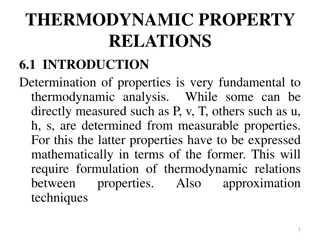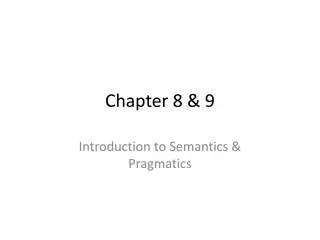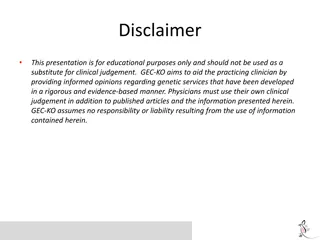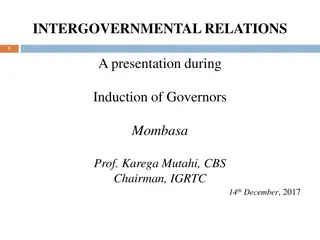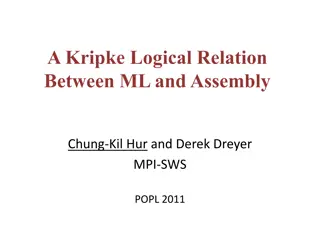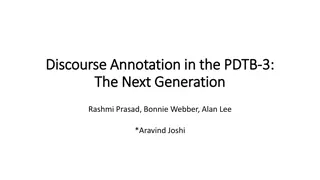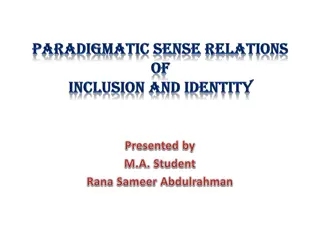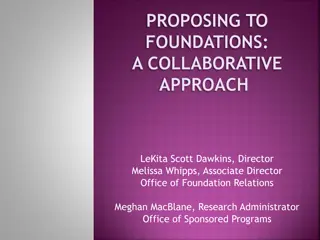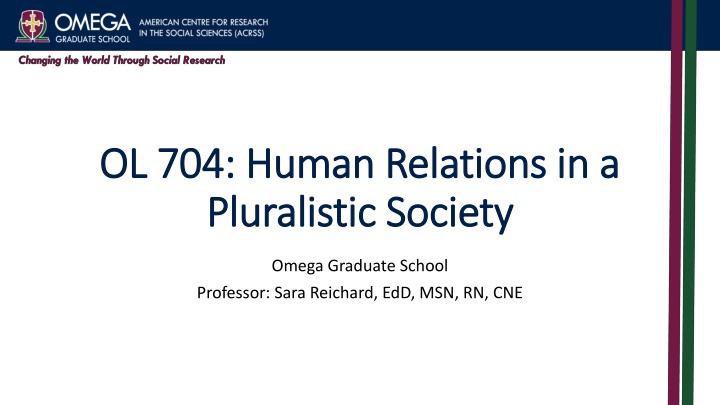
Human Relations in a Pluralistic Society
Explore the dynamics of human relations in diverse cultural settings, enhancing skills for multicultural inclusivity and leadership. Learn about pluralistic societies, cultural competence, and the importance of respecting unique identities.
Download Presentation

Please find below an Image/Link to download the presentation.
The content on the website is provided AS IS for your information and personal use only. It may not be sold, licensed, or shared on other websites without obtaining consent from the author. If you encounter any issues during the download, it is possible that the publisher has removed the file from their server.
You are allowed to download the files provided on this website for personal or commercial use, subject to the condition that they are used lawfully. All files are the property of their respective owners.
The content on the website is provided AS IS for your information and personal use only. It may not be sold, licensed, or shared on other websites without obtaining consent from the author.
E N D
Presentation Transcript
OL 704: Human Relations in a OL 704: Human Relations in a Pluralistic Society Pluralistic Society Omega Graduate School Professor: Sara Reichard, EdD, MSN, RN, CNE
Course Overview Course Overview Examines cultural and value differences among ethnic, racial, religious, and social groups Strengthens human relations skills in education, community, family, work, and leisure settings Develops understanding of intercultural competencies and leadership in diverse settings
Course Outcomes Course Outcomes Develop human relation skills for multicultural diversity and inclusion - Understanding diversity as the presence of different cultural identities Compare transcultural competencies for working in diverse communities - Competency in adapting to and respecting different cultures Apply faith-based human relations skills - Using Christian worldview principles to foster belonging Examine leadership skills in interdisciplinary cultural settings - Utilizing social intelligence in diverse professional spaces
Key Definitions Key Definitions Culture: The shared values, beliefs, and norms of a social group Pluralism: social system in which diverse cultural, religious, ethnic, and social groups coexist while maintaining their unique identities. Cultural Identity: The identity or feeling of belonging to a group based on cultural elements Unconscious Bias: Implicit attitudes or stereotypes that affect our understanding and decisions Cultural Competence: The capability to relate and work effectively in culturally diverse situations
What is a Pluralistic Society? What is a Pluralistic Society? Pluralism is a social system in which diverse cultural, religious, ethnic, and social groups coexist while maintaining their unique identities. Pluralistic societies are characterized by mutual respect, open dialogue, and institutional frameworks that promote belonging. In a pluralistic society: Different groups contribute to the social fabric without being forced to assimilate. There is a legal and cultural commitment to tolerance, diversity, and equal rights. Social and political institutions accommodate multiple perspectives and voices. Conflict resolution is based on dialogue and democratic principles rather than forced uniformity.
Pluralism vs. Monoculturalism Pluralism vs. Monoculturalism Feature Pluralism Monoculturalism A society where multiple cultural, ethnic, and religious groups coexist while maintaining their distinct identities. A society that promotes a single dominant culture, often expecting minorities to assimilate. Definition Encourages individuals to retain and express their cultural heritage. Expects individuals to adopt the dominant culture s values, traditions, and language. Cultural Identity Based on inclusivity, mutual respect, and coexistence. Social Integration Based on conformity to a uniform cultural norm. Laws and policies support diversity, multicultural education, and equal representation. Policies may prioritize the dominant culture, sometimes limiting minority representation. Institutional Policies Dialogue and democratic principles ensure peaceful coexistence. Differences may be suppressed or ignored, leading to marginalization. Conflict Resolution United States, Canada, India (promoting multiculturalism and religious freedom). North Korea, historical European nation-states enforcing cultural homogeneity. Examples
Human Relations Skills in a Pluralistic Society Human Relations Skills in a Pluralistic Society Human relations skills are essential in a pluralistic society because they enable individuals to navigate cultural differences, foster mutual respect, and build inclusive communities. Key reasons include: Promoting Effective Communication Reducing Conflict and Misunderstanding Encouraging Collaboration and Teamwork Fostering Social Cohesion Enhancing Adaptability and Cultural Competence.
Pluralism and Religious Freedom Pluralism and Religious Freedom A Christian perspective can affirm religious freedom as a God-given right, rooted in the dignity of human beings created in God's image (Genesis 1:26-27). A pluralistic society allows different religious traditions to coexist while providing space for Christians to live out their faith. Christians can engage in society with love, truth, and a commitment to justice for all.
Recognition: Identifying cultural differences and their impact Cultural Cultural Differences Differences - - 4 4 Step Process Step Process Respect: Valuing cultural diversity without judgment Reconciliation: Bridging gaps and resolving conflicts Realization: Integrating cultural awareness into daily practices
Six Sources Influencing Human Relations Six Sources Influencing Human Relations Personal Motivation: Individual drive to engage with different cultures Personal Ability: Skills needed to interact effectively Social Motivation: Influence of peers and social norms Social Ability: Group capacity to adapt and learn Structural Motivation: Institutional incentives for inclusivity Structural Ability: Systemic support for cross-cultural interactions
Case Study: Workplace Case Study: Workplace Cultural Competency A multinational corporation implemented a mandatory cultural competency program. Employees reported increased understanding of cultural differences and reduced workplace conflicts. Leadership promoted inclusive decision-making, improving employee retention and morale. Key Takeaway: Cultural competence training fosters workplace harmony and productivity. Cultural Competency
Case Study: Community Integration & Case Study: Community Integration & Multiculturalism Multiculturalism A city government introduced multicultural festivals and language accessibility programs. Immigrant communities felt more welcomed and engaged in civic life. Businesses adapted marketing strategies to reflect cultural diversity, increasing customer engagement. Key Takeaway: Proactive multicultural policies improve social cohesion and economic growth.
Course Assignments Course Assignments Essential Elements: Short written responses on human relation skills Developmental Readings: Analyze scholarly sources on course topics Essay: 5-7 page research paper on a social issue and transcultural competence Scholar s Porch Discussion Post: Online discussion on key course concepts Application of course concepts to real-world case studies

